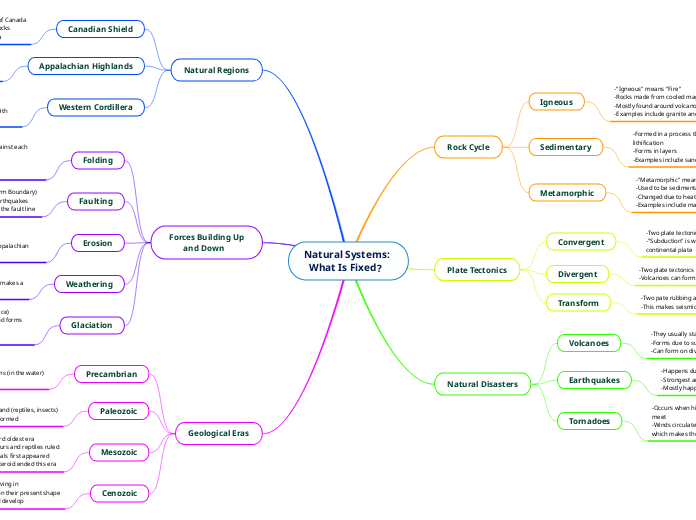GEOLOGIC TIME SCALE
Topic principal
Formal geologic time begins at the start of the Archean Eon (4.0 billion to 2.5 billion years ago) and continues to the present day. Modern geologic time scales additionally often include the Hadean Eon,
have divided Earth's history into a series of time intervals. These time intervals are not equal in length like the hours in a day. Instead the time intervals are variable in length. This is because geologic time is divided using significant events in the history of the Earth.
Classification of rocks strata
Hadean Eon: The Hadean Eon began with the formation of the first rocks on Earth and ended 4 billion years ago. Archean Eon:
The Archean Eon began 4 billion years ago and ended 2.5 billion years ago. During this time, the first areas of continental crust appeared and began coalescing into larger landmasses. Proterozoic eon:
The Proterozoic Eon is the most recent division of the Precambrian. Phanerozoic eon : The Phanerozoic eon is the visible life in all aspects, and it is in which all the modern creatures live around the entire planet. The Precambrian: The Precambrian (prior to 541 million years ago) was the "Age of Early Life." Soft-bodied creatures like worms and jellyfish lived in the world's oceans. Mesozoic Era:The Mesozoic Era (252 to 66 million years ago) was the "Age of Reptiles." Dinosaurs, crocodiles, and pterosaurs ruled the land and air. Cenozoic Era
: The Cenozoic Era (66 million years ago through today) is the "Age of Mammals." Birds and mammals rose in prominence after the extinction of giant reptiles.
Eons: Eons are the largest intervals of geologic time and are hundreds of millions of years in duration. Eras: Eons are divided into smaller time intervals known as eras. In the time scale above you can see that the Phanerozoic is divided into three eras: Cenozoic, Mesozoic and Paleozoic. Periods
Eras are subdivided into periods. The events that bound the periods are widespread in their extent but are not as significant as those which bound the eras. In the time scale above you can see that the Paleozoic is subdivided into the Permian, Pennsylvanian, Mississippian, Devonian, Silurian, Ordovician and Cambrian periods.Epochs
: Finer subdivisions of time are possible, and the periods of the Cenozoic are frequently subdivided into epochs
Dinosours
Other prehistoric reptiles
Dinosaurs are archosaurs, a larger group of reptiles that first appeared about 251 million years ago, near the start of the Triassic Period.
Some other non-dinosaur reptiles are also archosaurs, including pterosaurs (the now-extinct flying reptiles) and modern crocodiles and their ancestors.
What killed the dinosaurs?
The end of the Cretaceous Period saw one of the most dramatic mass extinctions Earth has ever seen.
The fossil record shows that for the first 175 million years of their existence, dinosaurs took on a huge variety of forms as the environment changed and new species evolved that were suited to these new conditions.
What caused the Cretaceous extinction?
The exact nature of this catastrophic event is still open to scientific debate. Evidence suggests an asteroid impact was the main culprit.
One of the reasons for dinosaurs' success is that they had straight back legs, perpendicular to their bodies. This allowed them to use less energy to move than other reptiles that had a sprawling stance like today's lizards and crocodiles.
Main characteristics dinosaurs share
-They had an upright stance, with legs perpendicular to their body. This is the main feature that sets dinosaurs apart from other reptiles.
-Like other reptiles, they laid eggs.
-With the exception of some birds, for example penguins, dinosaurs lived on land, not in the sea.
-Their skull had a hole between the eye socket and nostril. This feature is shared by all archosaurs.
-Dinosaurs also had two holes behind the eye socket. Large, strong jaw muscles went through the holes to attach directly to the top of the skull. As a result, the jaws were able to open wide and clamp down with more force.
Dinosaurs are a group of reptiles that dominated the land for over 140 million years (more than 160 million years in some parts of the world).
When did dinosaurs live?
Non-bird dinosaurs lived between about 245 and 66 million years ago, in a time known as the Mesozoic Era. This was many millions of years before the first modern humans, Homo sapiens, appeared.
Start counting “geologic time” from Earth’s surface downward; that is, starting with younger surficial deposits and descending into older rocks and deeper time. Scientific calculations presently place this event at 4.6 billion years ago.
Subtopic








